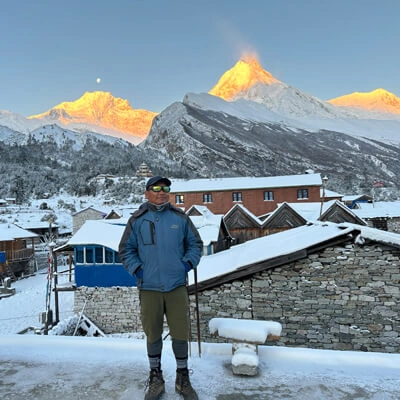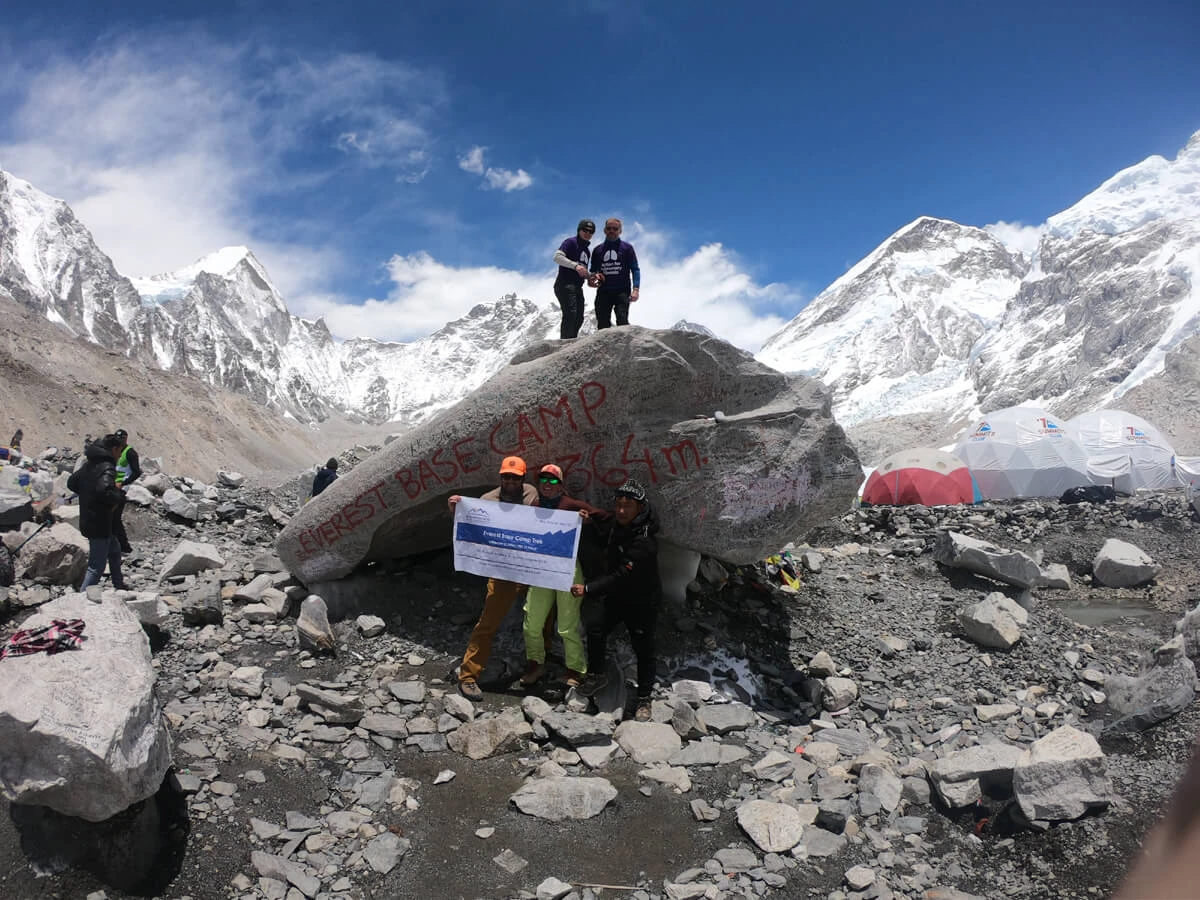EBC Trek is one of the best hiking destinations in the world. Since Sir Edmund Hillary and Tenzing Norgay Sherpa embarked on the epic journey to Mt. Everest in the 1950s, it has gained increased popularity among mountain lovers. The EBC Trek Odyssey provides an ideal opportunity to discover Mother Nature, the Himalayan scenery in the UNESCO World Heritage Site Sagarmatha National Park, the livelihood of Highlanders, and the centuries-old Sherpa tradition. This trek offers breathtaking views of the four highest mountains in the world, including Mt. Everest. The top of the world, “Mt. Everest (8,848 m),” view is outstanding from the most popular viewpoint, Kala Patthar. Including Mt. Everest Base Camp (5,360 m), Khumbu Glacier, and Khumbu Icefall are other remarkable sites of your lifetime experience in the Everest Base Camp voyage.
The EBC Trek Package embarks at Tenzing Hillary Airport at Luka after a short scenic flight from the capital city of Kathmandu. It follows the bank of the Dudh Koshi River with charming Sherpa settlements, Buddhist Chorten, wall painting, and the towering peaks of Thamserku and Kusum Kanguru before getting into Namche Bazaar. The trail ascends steeply along the Yaks caravan to the Namche Bazaar after the cross-Hillary suspension bridge at Dhudha Koshi and Bhote Koshi's confluence. Namche Bazaar (the weekly market fair every Saturday, Ancient Trading Hub, & Gateway of Mt. Everest) is an amazing place to spend a day. You can easily visit the Sherpa Museum, Sagarmatha Tourist Information Center, and monastery and hang around the town, but for adequate acclimatization, propose an excursion to the Everest View hotel with panoramic views, charming Khumjung Village (Yeti Scalp), and Hillary Visitor Center, and then back to Namche through the Syangboche Airport.
Afterward, head to Everest Base Camp through the Buddhist sacred site Tengboche (named Dawa Choling Gomba, the largest monastery of Khumbu), Pangboche (the last settlement for the EBC), and Dingboche with a significant Himalayan vista. During the acclimatization day at Dingboche, we will visit Nangkartshang Peak (5,615 m) with a wonderful view of the 4th highest mountain in the world, Mt. Lhotse (8,516 m), the 5th highest mountain in the world, Mt. Makalu (8,485 m), Mt. Cho Oyu (8,188 m), the sixth-highest mountain in the world, Island Peak (6,189 m), Amadablam (6,812 m), Kangtega (6,782 m), Thamserku (6,623 m), Taboche (6,542 m), Cholatse (6,440 m), etc. After a day's walk from Dingboche, we will visit the Mt. Everest Base Camp (5,360 m) via Lobuche and Gorakshep and climb to the most popular viewpoint, Kala Patthar (5,555), for the best scenery of Mt. Everest, Nuptse (7,861 m), and Pumori (7,161 m) at stone-throwing distance. The Khumbu Glacier, Icefall, and Everest Base Camp itself are key attractions of the EBC Track, and Kalapathar offers a wonderful snowcapped mountain view surrounding you. The sunset view from Kalapattar is best for the adventurous and passionate, with a colorful Everest view, but one needs to be well prepared with warm clothes and walk down at night.
After gaining a lifetime of experience, we retrace our steps to Lukla and return to Kathmandu from our further destination. We at Nepal Mother House Treks are glad to organize the Everest Base Camp Trek according to your schedule and requirements with the local Sherpa guide and porter. We are glad to customize the Everest Base Camp Trek itinerary to be shorter or longer per your holiday. Typically, with the exception of the Lukla flight, the Everest Trek is accessible all year round. However, the peak months for the EBC Trek are March, April, and May in the spring, and September, October, and November in the fall.
If the 15-day trip doesn't align with your holiday schedule, you can shorten the EBC trek to 10 days, but it requires physical fitness to endure such a high-altitude walk. It is best to know useful tips before trekking to Mount Everest Base Camp, where you can find secret tips for the EBC trek. The Complete Guide to Everest Base Camp covers every detail, including the type of trekking gear required for the trip, the expected weather conditions, the type of accommodation to expect during the trek, meals, drinking water, the cost of hiring a guide and porter, wifi networking, transportation, trekking permits, etc.











